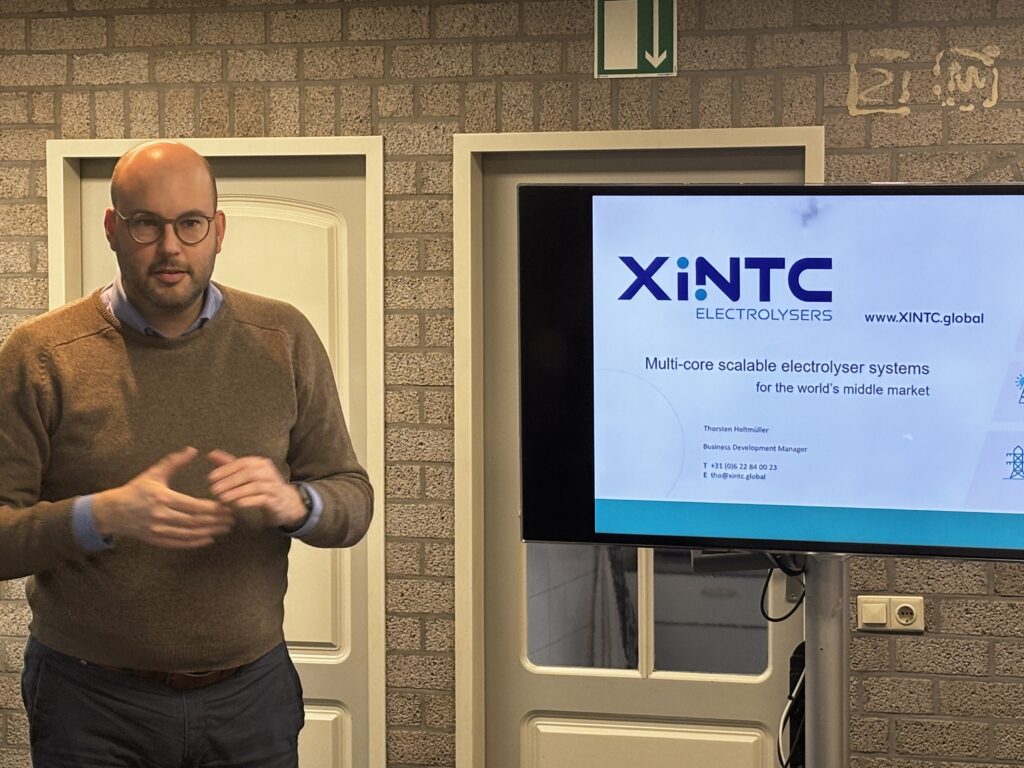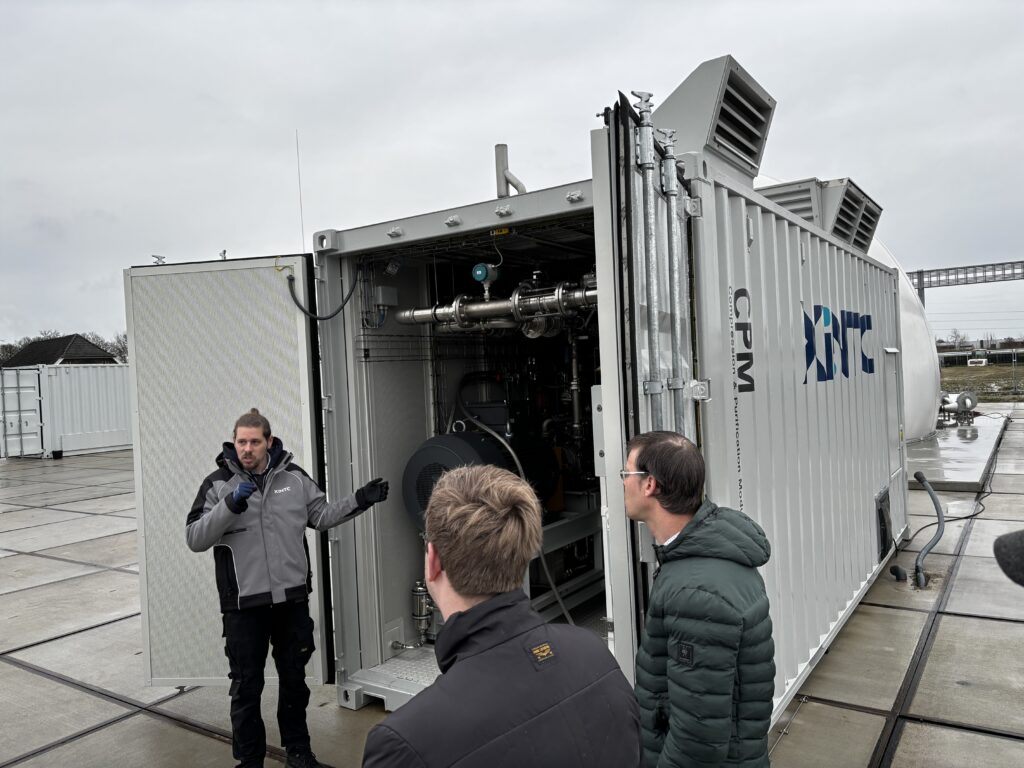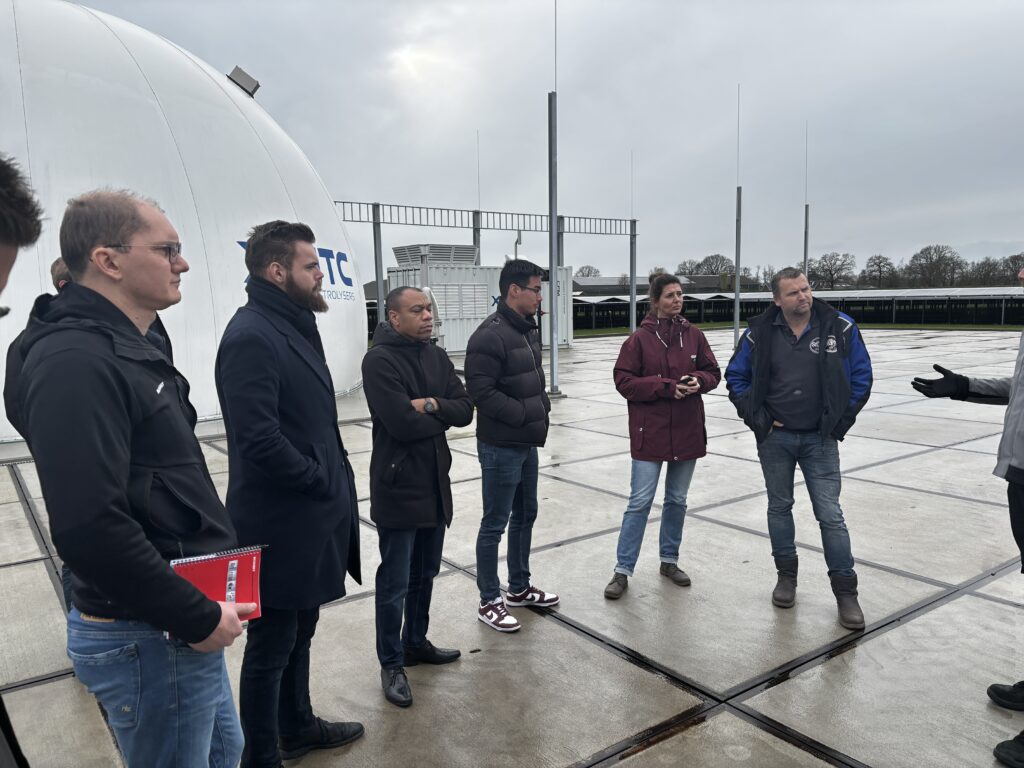Efficient production of hydrogen with fluctuating, renewable energy. With this promise, the Dutch company XINTC is causing a stir nationally and internationally. Curious about the possibilities, a delegation with partners from Fieldlab H2 in Agri visited the H2 Experience Center in Kootwijkerbroek on January 30.
The reactions of the approximately twenty-five delegation members (including those from Loonbedrijf Sturm-Jacobs, Rainbow Colors, BNR-Energy, Vertify, New Energy Coalition and Ontwikkelingsbedrijf Noord-Holland Noord) were enthusiastic. The unanimous conclusion was that XINTC has developed a unique electrolyser that is ideally suited for decentralised production of hydrogen, with direct power from fluctuating energy sources such as wind and sun. More about the installation later, it is also interesting to know more about the background of XINTC.

A central role in this history, explained business development manager Thorsten Holtmüller (XINTC), is played by the Van den Bosch family – from Bosch Beton in Kootwijkerbroek. When this company moved to another location a few years ago, a large site became available. The Van den Bosch family then proposed using the vacant site for a solar park. The municipal authorities were keen and so the construction process of what is now called Zonnepark Branderwal started at the end of 2022: a park with more than 40,000 solar panels that supplies 7,000 households with electricity.
But Bosch Beton wanted to go one step further, Holtmüller continued his story. The ambition of the concrete giant is to make the business processes as sustainable as possible. Special attention is paid to making heavy transport emission-free. “Freight traffic with diesel engines is increasingly being restricted. Electrification of transport is not a realistic option for Bosch Beton. Given the transport distances and the loading weight, hydrogen is the appropriate energy carrier.”
It did not stop at beautiful ambitions. Through the company Energeion – a subsidiary of the Van den Bosch family and owner of the solar park – investments were made in XINTC, among other things: a start-up from Delft/Eerbeek that focuses on the development of a scalable electrolyser system. The tech company developed a gas module, also known as a stack, that consists entirely of plastic components. During the development, much attention was paid to the robustness of the system and the desire to produce hydrogen at a low price.
Producing green hydrogen using electrolysis is still expensive. This is partly because these systems contain rare and valuable metals, such as iridium and platinum. Raw materials that XINTC lacks. By using the innovative gas modules, XINTC is able to build systems in any desired capacity. Holtmüller: “You can see the system as stacking Lego blocks. You can switch up and down depending on the supply of renewable energy.”


Thanks to the modular structure, production can flexibly move with peaks and troughs in supply. With smart electronics, the electrolyser follows the yield of the solar park. The system then produces hydrogen at times when the solar park supplies too much power to return to the grid.
From the stacks, the hydrogen goes to a dome-shaped buffer where it is further purified for use in a hydrogen fuel cell. At the end is a compressor; here the hydrogen is pressurized (up to 700 bar). The hydrogen can then be used as a clean energy carrier for heavy transport, such as trucks and ships, but also as an emission-free fuel or raw material for industry.
XINTC expects to deliver the first commercial installations this year. It is not known whether there will be any buyers in North Holland North. However, during the visit, several appointments were made for follow-up discussions.